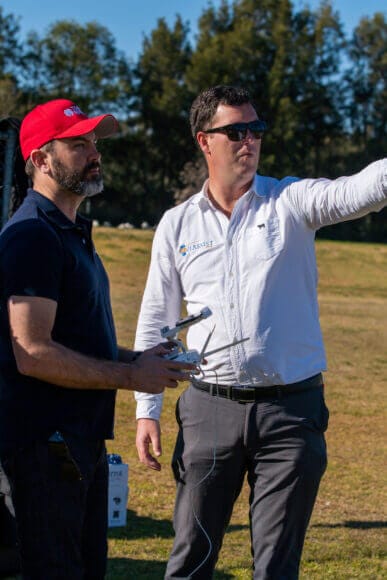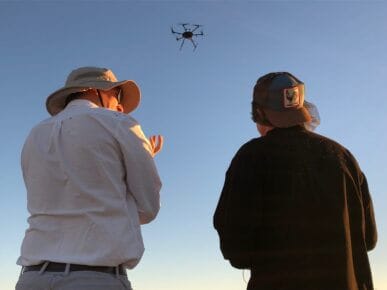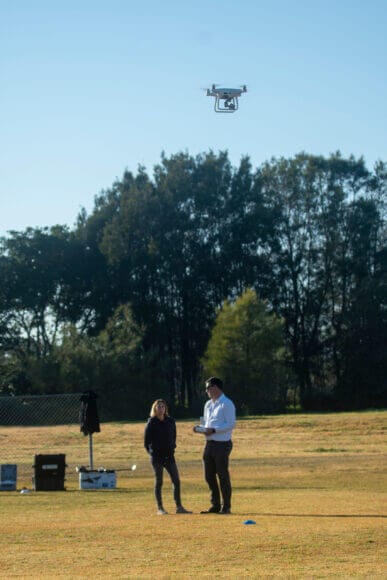With so many training options available, it becomes overwhelming trying to determine the avenue that will provide you and/or your business with the best outcome. It is easy to see the benefits of both Face-to-face delivery and exclusively online learning but when considering foreign concepts like Aviation charts, airspace users, air law for Remotely piloted aircraft systems (RPAS) and aerial acquisition best practice, are they equal? To help you decide, we have evaluated the age-old debate- Face to Face vs. Online; which is better in the context of RPAS training?

The extensive list of benefits to face-to-face learning helped Aviassist shape the design of their RPAS courses to best support the learner. Research shows that face-to-face learning is an effective way to access and comprehend the often-foreign concepts that are required to operate RPAS, as dictated by the Civil Aviation Safety Authority (CASA).
Face-to-face learning requires students to be physically present and focus on information provided to a predetermined schedule. The obligation to physically attend a course, is shown to lead to a higher degree of commitment to courses. This alone is thought to increase completion rates by up to 5 times, resulting from less distractions, a logical order of presented knowledge and the ability to interact with the presenter. Studies show that face-to-face delivery is preferable for most learners because of the possibility of direct interaction.
Students who take part in face-to-face learning are exposed to incidental information through real-world experiences given by accomplished instructors. Aviassist employ instructors from various aviation backgrounds, who also have comprehensive knowledge of specific RPAS applications.
This allows for information to be applied to your situation, or to recent events, to help support contextual understanding. The ability to be able to problem-solve and network with both instructors and other students, whilst applying it to real-life, provides a unique chance to cement knowledge at a deeper level. Exclusively online-learning is limited in its ability to achieve this as it is commonly a one-size fits all approach and personalisation is often not possible.
Online learning gives the learner the opportunity to access the information at their own rate and at a time convenient to them. It is understood that individuals completing their RPAS training will begin the course with various levels of prior knowledge, so this element of online learning offers great support and ability to slow or speed up their learning. However, students who access only online learning often have a rote understanding of concepts and struggle to retain the information and to apply it to real-life scenarios. This is evident with a higher rate of failure for online learners when attempting the theory and practical flying components of RPAS training.

Taking into consideration the aforementioned benefits of online learning, Aviassist offer 12 months access to the Online Learning Management system which can be accessed prior, during and after your course attendance to help boost prior knowledge and maintain knowledge and understanding.

Educational studies note the importance of catering to the different learning styles to help best support the learner and their retention of knowledge. Aviassist has designed their course content to access as many of these learning styles where appropriate. This means delivery of the course content is varied and utilises a multi-modal approach to support visual, verbal, kinesthetic, logical, auditory, social and solitary learning styles. The delivery can also be adapted if weaknesses are identified. Online learning has the disadvantage of limited options in delivery and not personally knowing the student. Online learning would be beneficial to certain learning styles, but unless carefully curated to not take a one-size fits all approach, this style of learning often sees learners disempowered and withdraw or be unsuccessful in their learning.
Online learning presents the opportunity to learn at your own speed and access information when convenient to the learner. One of the greatest features is the ability to reuse and review the information and allowing ease in terms of updates and translations. The biggest opportunity that face to face training presents is the ability to discuss, collaborate, practice and role play, all ‘live’ and with guidance from the instructor on hand.
Being part of a group and being held accountable are powerful learning tools and evidence tends to suggest face-to-face learning has a higher success rate.
In reality, the debate between face-to-face learning and online learning is easy- Why not have the perfectly balanced combination of both? Aviassist understand the benefits and limitations of both online learning and face-to-face instruction and have designed their courses with this in mind. The combination of modalities allows students to navigate information online whilst still facilitating face-to-face interactions to create that deeper knowledge.
